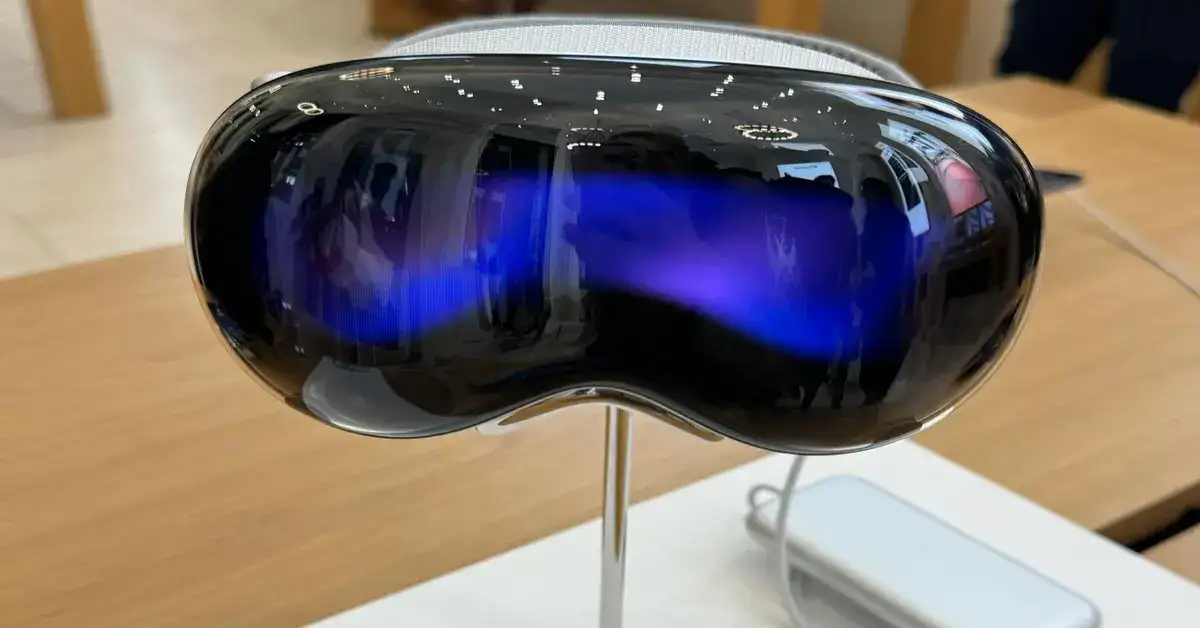Table of Contents
In the sometimes developed landscape of mixed reality technology, Apple Vision Pro emerges as a game-changer. This depth reviews the revolutionary characteristics of the headset, state -of -the -art design, and philosophical ideas to the table.
Anboxing luxury
From unboxing experience, vision provides luxury and careful attention to expansion, synonymous hallmarks of Apple products. Premium packaging, with a trip case and high quality polishing fabrics, sets the platform for a unique user trip. Build quality and design volume speaks, which display Apple’s commitment to craftsmanship and beauty attraction.
The seamless setup process, especially the spontaneous pair with an iPhone, underlines the integration of the vision Pro in the Ecosystem of Apple, which is a strategic aspect of its design philosophy. However, questions arise about the comfort of the headset during long use.
Design and craftsmanship
In a market saturated with heavy VR headsets, the Vision Pro stands with its premium construction, using magnesium, carbon fibers and an aluminum enclosure. To take inspiration from familiar Apple products such as iPhone 6, AirPods Max, and Apple Watch, it immediately packages state -of -the -art techniques. Compact design not only enhances sophistication, but also enhances portability, which departs from the wholesale of its predecessors.
Eye light and front performance
A distinctive feature of the vision Pro is its front display, aimed at introducing the eyes of the worker in the outside world for more impervious experience. However, the execution receives mixed reactions. While a miracle in marketing, performance often appears slow and low-razed in practical use, and reflective glass faces visibility challenges in different lighting conditions. Despite its intentions to promote eye contact and reduce isolation, the design introduces practical boundaries, leading to a terrible and some extent disconnect experience.
Hardware skills and accessories
Powered by an M2 processor and the new R1 spatial co-processor of the processor and Apple, the vision Pro claims a sophisticated cooling system, which ensures optimal performance without audio noise. With two types of headbands and adaptable light seals, comfort is preferred, although the weight of the headset increases concerns for extended use. The exterior battery, a weight-reducing agreement, provides a two-and-a-half-hour battery life, highlights the design of the device.
Visionos and spatial computing
Running from iPados on visionos, the Vision Pro offers a comprehensive app library from the beginning, giving it a significant edge over the contestants. The OS facilitates a highly adaptable experience with a free-flotting window, supporting the application from three different operating systems: Native Visionos Apps, iPad App and Mac connectivity for an additional display. However, the Vision Pro Mixed Reality (MR) and Virtual Reality (VR) bends more towards experiences, with limited true enhanced reality (AR) interactions.
Conclusions: a glimpse in the future
Apple’s vision provides a monumental progress in the future of Pro provisive computing, performing impeccable design and changes a possible paradigm to individual computing. However, it brings significant trade-bands to light, from its premium price point to solitary nature of its use. Although it offers an attractive glimpse in the future, practical boundaries remind us of challenges in integrating spatial computing in our daily lives.
As the vision Pro develops with an increasing array of anticipated software updates and compatible apps, it is ready to re -shape the mixed reality technology landscape. Beyond a mere product, it manipulates the future, providing information about how the mixed reality can change our conversation with the digital world.
Previous Post

